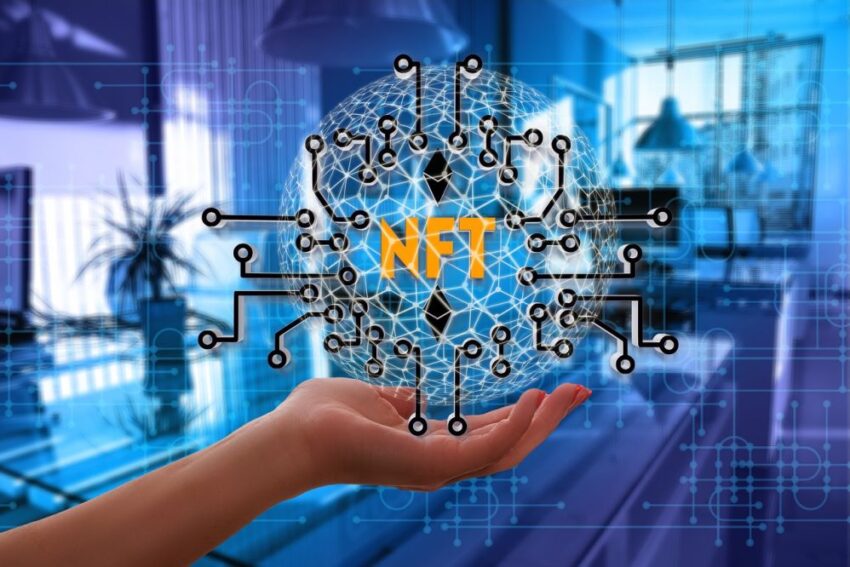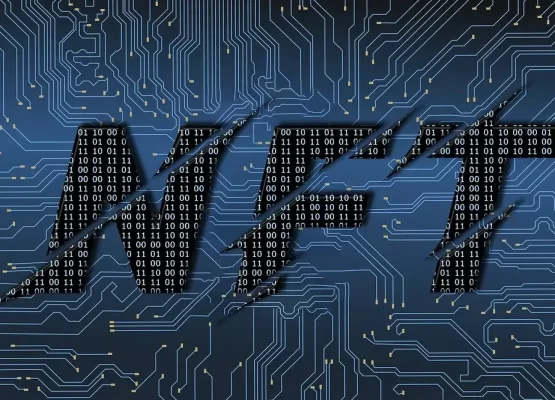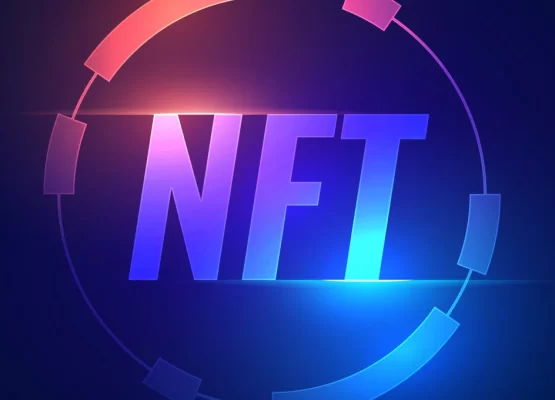NFT (Non-Fungible Token) marketplaces are a rapidly growing industry that has the potential to revolutionize the way we buy and sell unique digital assets. As the popularity of NFTs continues to grow, many NFT marketplaces are looking for ways to monetize their platforms and generate a steady stream of income. There are a variety of strategies that NFT marketplaces can use to monetize their platforms, including transaction fees, advertising, and premium memberships.
Transaction fees allow NFT marketplaces to generate revenue by charging a fee on each transaction that takes place on their platform. Advertising provides a source of income by allowing businesses and individuals to promote their products and services to the platform’s users. Premium memberships offer users additional benefits and perks in exchange for a monthly or yearly fee, providing a stable source of recurring revenue for the marketplace.
While each monetization strategy has its advantages and disadvantages, NFT marketplaces can choose to use a combination of strategies to diversify their revenue streams and reduce the risk of relying on a single source of income. In this article, we will discuss different monetization strategies for NFT marketplaces and how each can be leveraged to generate revenue.
What is a NFT marketplace, and what are its potential monetization strategies?
A NFT marketplace is a platform that allows individuals and organizations to buy, sell, and trade non-fungible tokens (NFTs). NFTs are unique, digital assets that are stored on a blockchain and can represent ownership of anything from collectible items and digital art to real estate and intellectual property.
Monetizing an Non Fungible token Marketplace can be done through various strategies, including:
- Transaction fees: Charging a fee for each transaction on the marketplace, such as a percentage of the sale price or a flat fee.
- Advertising: Allowing companies and individuals to advertise their products or services on the marketplace in exchange for a fee.
- Premium memberships: Offering special perks and benefits, such as reduced transaction fees or exclusive access to certain NFTs, to users who pay a monthly or yearly fee.
- Commission fees: Taking a commission on each NFT sale made on the marketplace, similar to the way art galleries take a commission on art sales.
- Paid subscriptions: Charging a fee for access to certain features or sections of the marketplace, such as a directory of NFT collectors or advanced search tools.
- Token sales: Issuing a token that represents ownership in the NFT marketplace and allowing users to purchase the token in exchange for a portion of the platform’s revenue.
Each NFT marketplace may choose to monetize in one or multiple ways, depending on their goals and target audience. The most effective monetization strategy will depend on the specific features and offerings of the NFT marketplace.
Transaction Fees: How can marketplaces generate revenue from transactions?
NFT marketplaces can generate revenue from transactions by charging a fee for each sale or transfer of NFTs. This fee can be a percentage of the sale price or a flat fee. For example, a common fee structure for NFT marketplaces is to charge a 3% fee on each sale, which can cover the costs of running the marketplace and provide a source of income.
Transaction fees can be an attractive monetization strategy for NFT marketplaces because they can generate revenue without requiring the platform to take ownership of any NFTs or interfere with the buying and selling process. This can also encourage a high volume of transactions and promote the growth of the marketplace.
However, it’s important to keep in mind that transaction fees can impact the buyer and seller experience on the NFT marketplace. High fees may discourage users from using the platform, while low fees may not be sufficient to cover the costs of running the marketplace. It’s important for NFT marketplaces to strike a balance and find the right fee structure that both generates revenue and provides a positive experience for users.
Advertising: How can marketplaces generate revenue through advertising?
NFT marketplaces can generate revenue through advertising by selling advertising space to businesses and individuals who want to promote their products or services to the marketplace’s users. This can be done in a variety of ways, including:
- Display ads: Displaying banner or display ads on the marketplace’s website or app, which can be targeted to specific users based on their interests or behaviors.
- Sponsored content: Allowing businesses to create sponsored content, such as blog posts or tutorials, that are featured prominently on the marketplace’s website or social media channels.
- Influencer partnerships: Partnering with influencers or popular NFT creators to promote products or services on the marketplace.
- Featured listings: Allowing businesses to pay for their NFT listings to be featured prominently on the marketplace, such as on the homepage or in a special section for featured NFTs.
Advertising can provide a stable source of revenue for NFT marketplaces, as businesses are willing to pay for access to the platform’s audience. It’s important for NFT marketplaces to carefully manage their advertising program to ensure that it aligns with the platform’s values and doesn’t negatively impact the user experience. For example, some NFT marketplaces choose to limit the number of ads displayed on the platform or to only allow advertising from select, high-quality businesses.
Premium Memberships: What kind of premium memberships are available for NFT marketplaces?
Premium memberships for NFT marketplaces can offer a variety of benefits and perks to users who pay a monthly or yearly fee. Some common types of premium memberships include:
- Reduced transaction fees: Premium members may receive a reduced fee on each transaction they make on the marketplace, making it more cost-effective for them to buy and sell NFTs.
- Exclusive access to NFTs: Premium members may have exclusive access to certain NFTs or collections that are not available to non-premium users.
- Priority customer support: Premium members may receive priority support from the marketplace’s customer service team, including faster response times and more personalized assistance.
- Early access to new features: Premium members may be given early access to new features and tools that are developed for the marketplace, allowing them to get a head start on the competition.
- Special promotions: Premium members may receive special promotions and discounts on products and services related to NFTs, such as storage solutions or NFT-related merchandise.
The type of premium memberships offered by an NFT Development platform will depend on the platform’s goals and target audience. It’s important for NFT marketplaces to carefully consider what benefits and perks will be most appealing to their users and to price their premium memberships appropriately. Offering too many benefits can increase the cost of running the premium membership program, while offering too few benefits may not be appealing enough to attract users to upgrade.
What are the advantages and disadvantages of monetizing NFT marketplaces using different strategies?
Advantages and disadvantages of monetizing NFT marketplaces using different strategies include:
- Transaction fees:
Advantages:
- Provides a stable source of revenue without requiring the platform to take ownership of NFTs or interfere with the buying and selling process
- Encourages a high volume of transactions and promotes the growth of the marketplace
- Does not impact the buyer and seller experience on the platform, as long as the fees are reasonable
Disadvantages:
- High fees may discourage users from using the platform
- Low fees may not be sufficient to cover the costs of running the marketplace
- Balancing the fee structure to generate sufficient revenue while still providing a positive experience for users can be challenging
- Advertising:
Advantages:
- Provides a stable source of revenue from businesses and individuals who want to promote their products or services to the platform’s users
- Offers businesses and individuals access to the marketplace’s audience, which can be valuable for reaching new customers
Disadvantages:
- Overloading the platform with too many ads may negatively impact the user experience
- Careful management of the advertising program is required to ensure that it aligns with the platform’s values and does not harm the user experience
- Ad-blockers and other technology may reduce the effectiveness of advertising as a monetization strategy
- Premium memberships:
Advantages:
- Offers users a way to receive additional benefits and perks in exchange for a monthly or yearly fee
- Provides a stable source of recurring revenue for the platform
Disadvantages:
- Balancing the benefits offered to premium members with the cost of running the premium membership program can be challenging
- Offering too many benefits may increase the cost of running the program, while offering too few benefits may not be appealing enough to attract users to upgrade
- The popularity of premium memberships may vary depending on the platform’s target audience and the benefits offered.
It’s important for NFT marketplaces to carefully consider their monetization strategy and weigh the advantages and disadvantages of each approach. Some marketplaces may choose to use a combination of monetization strategies, such as charging transaction fees and offering premium memberships, to diversify their revenue streams and reduce the risk of relying on a single source of income.
Conclusion
In conclusion, NFT marketplaces have a variety of options when it comes to monetizing their platforms. Transaction fees, advertising, and premium memberships are just a few of the strategies that NFT marketplaces can use to generate a steady stream of income. Each monetization strategy has its own advantages and disadvantages, and NFT marketplaces can choose to use a combination of strategies to diversify their revenue streams.
It’s important for NFT marketplaces to carefully consider their monetization strategy and weigh the advantages and disadvantages of each approach. With the right combination of strategies, NFT marketplaces can create a profitable business model that provides a positive user experience while generating a steady stream of income.
In the rapidly growing world of NFTs, the opportunities for monetizing NFT marketplaces are endless. By carefully considering their monetization strategy, NFT marketplaces can position themselves for success and tap into the exciting potential of this rapidly growing industry.




